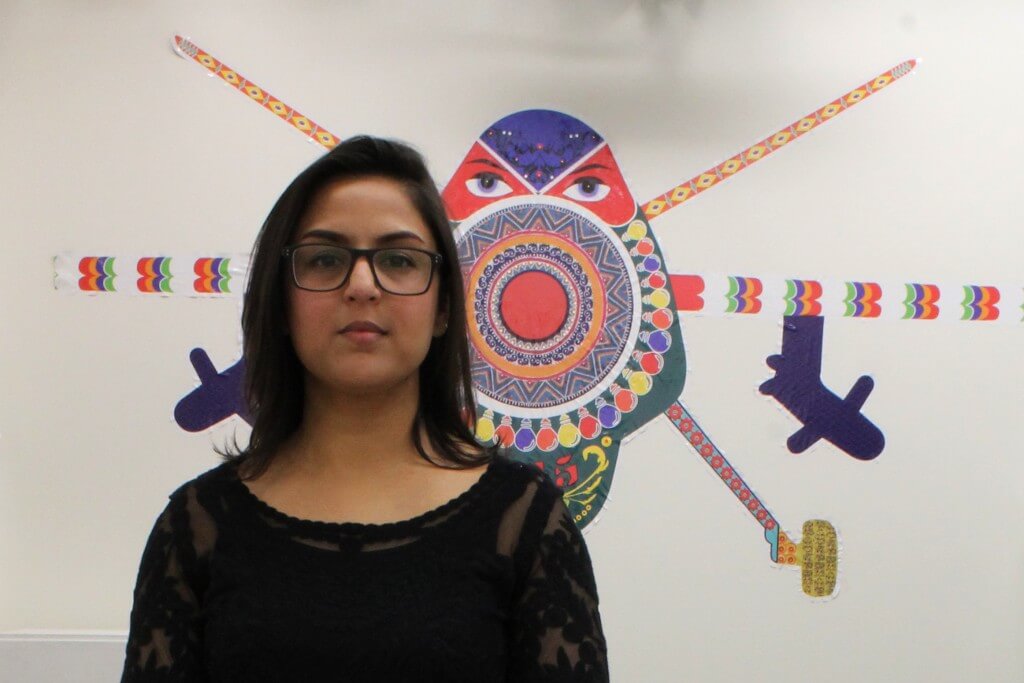- January 09, 2018
- By Sala Levin ’10
In Mahwish Chishty’s native Pakistan, and across South Asia, kites are celebrated with festivals and are prized for their high-flying prowess. But in Pakistan, especially near the border with Afghanistan, kites can sometimes fly into danger: Living near a war zone has made the very act of going outside risky.
Last year, Chishty MFA ’08 was awarded a Guggenheim Fellowship, a grant that will allow her to connect children and families living near the U.S.-Mexico border with children and families living near the Afghanistan-Pakistan border by building kites. Chishty plans to invite children in both locations to create kites, which they will exchange and later fly at the same time as video captures the scene for livestreaming.
“People will be able to see each other at two extreme ends of the world,” says Chishty. “They’ll be able to connect.”
 Chishty’s inspiration for the project came from a 13-year-old Pakistani boy who told an Amnesty International conference that he plays outdoors only when it’s raining, because drones can’t operate then.
Chishty’s inspiration for the project came from a 13-year-old Pakistani boy who told an Amnesty International conference that he plays outdoors only when it’s raining, because drones can’t operate then.
Drones have played a pivotal role in Chishty’s work since 2011, when she visited Pakistan and discovered that her friends and family were talking about drone strikes—a topic Chishty hadn’t heard much about in the U.S. “When I started looking into it, it became very clear that this is something that needs to be discussed and that people over here need to know about,” she says.
Trained in miniature painting at the National College of Arts in her hometown of Lahore, Chishty began to incorporate traditional Pakistani styles of art in works that depicted drones. In her “Drone Series,” she painted silhouettes of drones and then covered them with the calligraphy and floral patterns commonly found adorning trucks in Pakistan—part of the country’s “truck art” culture, in which truck owners use their vehicles as a canvas.
“By camouflaging modern war machines with folk imagery, Chishty is shedding light on the complexity of acculturation, politics and power,” the John Simon Guggenheim Memorial Foundation wrote upon awarding her the fellowship, which gives artists grants for six to 12 months to work on a particular project.
Chishty, an assistant professor at Kent State University who has exhibited her work at galleries and museums in Australia, England, the U.S. and other countries, says that her experience at Maryland was vital to her artistic growth. “Coming in as a miniature painter, the whole world opened up for me,” she says. “I kind of lacked information about what was happening in contemporary art to be an artist in this day and age.”
Now using her art to tackle one of the most contemporary—and controversial—weapons, Chishty sees the development as a deeply personal one. “I’ve been thinking a lot about why I’m doing all of this. It’s definitely because of my identity,” she says. “How does this relationship that I have with these two worlds collide? It happens in politics, with language—it’s happening with every aspect of my life, so I think that work is going to be about that because that’s what I’m thinking about all the time.”
